CHILDHOOD DEPRESSION
Depression is a highly complicated condition. As it is experienced by children, is even more complex. This page is designed to provide an initial overview on the topic and offer some strategies for teachers to consider utilizing. You are encouraged to seek out more comprehensive and precise information on this topic.
*NOTE: Please don't let the corny and irreverant humor, found embedded all pages of this web site, lure you into thinking that I fail to recognize the serious nature of mental health impairments. With regard to this page, I fully understand that depression isn't viewed as a humorous condition to those individuals, friends, and family involved. Instead, the condition is very often severe, persistent, and debilitating. The humor found on this page is meant as a counterbalance to the earnest description found below.
What is Depression?
Depression is defined as a mood disturbance, a disorder of feelings and emotions that can range from mild to severe in intensity. Quite wide spread, it is often referred to as being the "common cold of mental disorders".
Depression is believed to be a result of a chemical imbalance in the brain. Some scientists believe that an imbalance happens first, causing the depression. Some believe that emotional stress may bring on the chemical changes that result in the characteristics of depression. Others see an destructive interactive influence of brain chemistry and one's environmental experiences on each other.
Whatever the sequence of events, when a person is experiencing depression, certain chemical substances that transmit electrical impulses in the brain are too low in certain key parts of the brain. Typically, depression is experienced as feelings of sadness, disappointment, or loneliness that can lead to withdrawal from people and lessened enjoyment of life. Often, bodily discomforts such as aches and pains are present too.
Incidence Figures
According to the National Health Association up to 2.5% of children and 8.3% of adolescents in the U.S. suffer from depression. The American Academy of Child and Adolescent Psychology estimates that about 5% of kids are suffering from depression at any one time. A history of close family members with depression increases the risk of occurrence for children in that family.
Often depression is overlooked in the special ed population. It frequently co-exists with at least one other disability, often a conduct or attention deficit disorder. Severely depressed children might also experience hallucinations or delusions. Therefore, many children who suffer from depression are often misdiagnosed with schizophrenia, missing the symptoms of depression. In these aforementioned cases, the more outward characteristics are noted by professionals who then may miss the indicators of accompanying depression.
Due to limited statistics, it is unclear how many children with disabilities also suffer from depression. However, it is generally accepted that depression and suicidal inclinations are higher among special ed students than among the general school population. It is estimated that between 30 to 40 percent of students labeled emotionally and/or behaviorally disordered, and 10 to 20 percent of students with learning disabilities also suffer from depression. Students with disabilities may suffer from depression due to the limitations placed upon them by the condition, or the stigma of being labeled with a disability. In addition, a number of biological factors related to the root of disabilities might bring about an increased chance of developing depression. For example, traumatic births, serotonin deficiencies, and other psychiatric disorders might contribute to the development of depression.
Some youngsters with feelings of depression cope with their sadness by sharing feelings with others or writing them in a journal. Others put the best possible spin on the problem as they try to find a personally acceptable explanation for what occurred, or identify a positive aspect to the events. Many engage in distracting thoughts or activities to temporarily exclude sadness from their conscious mind. With the passage of time, sad thoughts typically dim and drift further into the past. Their memories have less impact on the child's daily life.
Just about all of us can remember times when we felt depressed previous to age 18. Certainly, feeling sad or mildly "depressed" is a normal part of childhood, especially following disappointing or distressing events. Usually, kids "get over it" or find ways to make the situation better. However, there are those children for whom sadness is not superficial or transient.
Some youngsters are unable to adequately manage feelings of sadness. For them, the "tricks" for dealing with unhappiness and disappointment don't work. How can we help children who obsess on negative thoughts about themselves and their future? What can we do for children who feel unrelenting sadness, especially when there doesn't seem to be a "good reason" for its continuation? What should we know, and what is available in the way of interventions? Read on.
Symptoms of Depression:
First, we should know that childhood depression may not take the form of "clinical" or adult depression in which the person becomes lethargic, unmotivated, and "down" or "blue" (although this form is often present in children, and becomes more common as youngsters enter adolescence). In identifying depression in children, it is important to avoid making the mistake of looking only for symptoms that characterize adult depression such as fatigue, suicidal fantasies, low self esteem, and social withdrawal. Depression in children is often "disguised" by "active" behavior such as irritability, temper tantrums, violence, risky actions, and/ or refusal to go to school. It is also important to note that sometimes something as simple as sleep deprivation due to staying up too late can mimic depression. If a better night time schedule and a nap or two usually clear things up, it wasn't true depression.
Signs and symptoms can vary depending on the age, personality, and home situation of the youth. Again, symptoms may vary from mild to profound. Typically, the indicators listed below are first thought by parents to be reflective of a physical condition or illness. They then visit the pediatrician who (hopefully) detects the condition (although many pediatricians are not knowledgeable in this area). To assist in identification, it is important that professionals working with children be alert for the following signs, often seemingly contradictory:
Feelings (as identified by verbalizations)
*Feeling sad (cries, pouts, looks sad or troubled)
*Feeling hopeless about the future (says that nothing s/he does will make a difference, not caring about outcomes)
*Feeling poorly about oneself and one's abilities (makes negative remarks about self, evaluates oneself poorly in contrast with others)
*Feeling responsible (blames self for past events and negative outcomes in the present)
*Feeling alone (expresses that no one likes him or her, says that no one understands)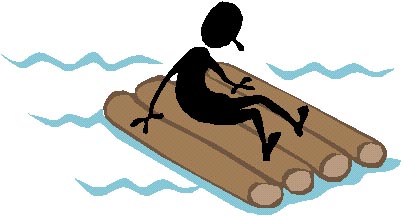
Physical Symptoms
*Is lethargic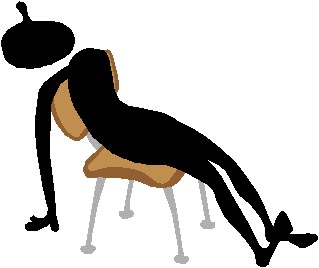 , or conversely...highly active
, or conversely...highly active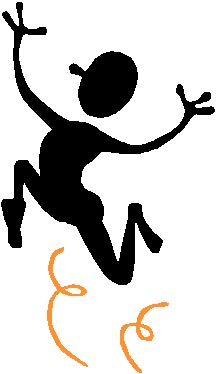
*Fatigues easily, or conversely...rambunctious
*Becomes ill frequently
*Pretends to be ill
General Behavior
* Seems distracted; has trouble focusing and concentrating
* Emotional instability; the child angers with little provocation and/or cries easily
* Fails to find happiness in activities that typically give children joy.
* Frequently mentions unhappy thoughts and sad memories
Eating
* Loss of appetite
* Compulsive overeating
Appearance
* Obvious weight change (loss or gain)
* Looks to be very tired
*Has a sad appearance, or looks very tired and worn out
I'm only wearing black until they create a darker color.
Sleep Patterns
*Engages in attention-seeking actions at bedtime
* Awakens more frequently during the night than was previously the case (insomnia)
* Experiences frequent nightmares and night terrors
* Slow to awaken and "get moving" in the morning
* Sleeps during the day even after a good night's rest (hypersomnia)
Relationships
*Excessive seeking of parental attention
* Lacks interest in friends' or family's activities
* Fights with friends and adults over trivial matters, irritable with others
School
* Avoids school or classes
* Diminished interest in school, schoolwork, or after-school activities
* Avoids socializing with friends or family; seeks isolation
The DSM-5 Criteria for Diagnosis
The DSM-5 is the 5th edition of the Diagnostic and Statistical Manual of the American Psychiatric Association. Here is the criteria, taken verbatim from the manual:
A. Five (or more) of the following symptoms have been present during the same 2- week period and represent a change from previous functioning;
- at least one of the symptoms is either (1) depressed mood or (2) loss of interest or pleasure. Note: Do not include symptoms that are clearly due to a general medical condition, or mood-incongruent delusions or hallucinations.
- Depressed mood most of the day, nearly every day, as indicated by either subjective report (e.g., feels sad or empty) or observation made by others (e.g., appears tearful). Note: In children and adolescents, can be irritable mood.
- Markedly diminished interest or pleasure in all, or almost all, activities most of the day, nearly every day (as indicated by either subjective account or observation made by others).
- Significant weight loss when not dieting or weight gain (e.g., a change of more than 5 percent of body weight in a month), or decrease or increase in appetite nearly every day. Note: In children, consider failure to make expected weight gains.
- Insomnia or hypersomnia nearly every day.
- Psychomotor agitation or retardation nearly every day (observable by others, not merely subjective feelings of restlessness or being slowed down).
- Fatigue or loss of energy nearly every day.
- Feelings of worthlessness or excessive or inappropriate guilt (which may be delusional) nearly every day (not merely self-reproach or guilt about being sick).
- Diminished ability to think or concentrate, or indecisiveness, nearly every day (either by subjective account or as observed by others).
- Recurrent thoughts of death (not just fear of dying), recurrent suicidal ideation without a specific plan, or a suicide attempt or a specific plan for committing suicide.
B. The symptoms cause clinically significant distress or impairment in social, occupational or other important areas of functioning.
C. The symptoms are not due to the direct physiological effects of a substance (e.g., a drug of abuse, a medication) or a general medical condition (e.g., hypothyroidism).
Causes Of Childhood Depression:
Some causes for some cases of childhood depression seem obvious to us, but other times we are unable to discern a possible etiology. Certainly a long-term illness, an unhappy home situation, lack of social skill in interacting with others, and emotionally traumatic events can bring about depression. The various causes are sometimes categorized in the following manner:
1. Reactive - Depression as a response to environmental factors (family changes, death of a loved one, end of a relationship)
2. Endogenous - Depression due to biological or genetic factors (brain chemistry change, inherited predisposition to depression, trauma/injury to the brain)
3. Traumatic environments - Depression as a reaction to an emotionally overwhelming experience such a child abuse, harsh conflict, or real or imagined fears of physical or emotional harm.
The reasons students give for failure or the happening of a "bad" event is believed to determine whether they experience the helpless feelings that lead to depression. Three attributional spectrums or continua are often considered by psychologist in their evaluation of children:
External/Internal - "External attribution" means that a particular outcome is believed to be determined by other people or circumstances. One believes that s/he has little influence over the outcome of events. Children often attribute many of their concerns to circumstances beyond their control (luck, fate, chance, powerful others controlling the events). Strong external forces are seen to be beyond their control. "Internal attribution" means that the student believes that s/he was responsible for the outcome in a situation.
Stable/Unstable - If external forces are believed to be at work, this continuum looks at whether the youngster believes that these external forces will always be present. An "unstable attribution" is one in which the youngster views the cause in this case as being transitory, and probably not likely to reappear under similar circumstances. A "stable" attribution means that the child views the influence as being persistent and continuous.
Global/Specific - Those with a "global" attribution believe that the cause of the outcome in a particular situation also influences all other areas of his/her life. A "specific attribution" outlook sees the cause as occurring only this one time in this particular aspect of life. A "global attribution" perception means that the youngster views the perceived force to be influential in many areas of life.
Depressed students make more internal, stable, and specific attributions for failures, and more external, unstable, and global attributions for successes. They blame themselves for undesirable results, but fail to see the importance of their efforts in positive outcomes.
A Quick Checklist For Teachers
If a teacher suspects that a student in his/her class is suffering from depression, the following checklist of symptoms can be helpful in verifying one's concern and specifying those concerns to other parties. You might even rate each characteristic on a 0 to 5 scale to provide information on intensity to the counselor/psychologist/school-based support team with zero meaning "not noticed" and five representing "a serious concern that is very pronounced". Also provide examples and evidence to better delineate the concerns.
Academic Signs
__Unexplained decline in grades/performance
__Loss of interest in school subjects
__Giving up easily when attempting schoolwork
__Low motivation and effort, even though functioning at grade level
Cognitive Signs
__Problems concentrating
__Forgetfulness
__Indecisiveness
__Diminished ability to think, analyze, and decide
__Lack of confidence in one's ability to make good decisions
__Lack of energy, feelings of fatigue
Social/Behavioral Signs
__Disruptive Behavior
__Restlessness
__Similar characteristics to ADHD: Impulsive, inattentive, unable to focus, hyperactive
__Reckless behaviors
__Antisocial behaviors (lying, stealing)
__Withdrawing from social contact
__Does not want to participate in activities that are fun for other children
__Doesn't want to interact or socialize with other children
__Alienating peers
__Loss of appetite
__Unreasonable fears
__Looking tired or falling asleep
Emotional Signs
__Poor self-image/concept (one's conceptualization of oneself and the characteristics attributed to oneself...athleticism, intelligence, social ability, etc... are evaluated negatively)
__Low self-esteem (the degree to which one feels good about oneself is low)
__Expresses feelings of sadness
__Expresses excessive guilt or remorse over his/her actions
__Expresses feelings of helplessness
__Expresses feelings of worthlessness
__Talks/draws/writes about suicide and/or death
__Irritable and cranky
__Excessive complaining
__Does not display pleasure/happiness when other children are doing so
Further Assessment of Depression
When professionals are concerned about indications of depression, they often segment the youngster's day into three parts: (1) home life and family member interaction, (2) school performance and adherence to after school study regiments, and (3) social interaction with friends and other peers. The child's level of functioning at home, school, and in neighborhood social interactions is then evaluated. This evaluation format helps to determine the life areas in which intervention is necessary.
A behavioral assessment (observation and analysis of behaviors/actions) is usually completed to determine the degree to which the child's behavior and functioning level are influenced by his/her unhappy feelings (as determined by a psychologist or psychiatrist).
Consideration is also given to whether the depression is "reactive" or "chronic" in nature. Reactive depression is transitory and usually tied to a specific event or circumstance in the child's life (death of a family member, divorce of parents). Chronic depression is the continuing reappearance of unhappiness with some frequency. This version is more resistant to intervention and change.
Age plays an important role in how a child reveals that he/she is depressed. An infant may fail to grow physically, the toddler may have prolonged tantrums, the nursery school child may be overly aggressive or withdrawn, the elementary school child may refuse to got to school, and the adolescent may refuse to comply with directions.
In very young children, symptoms of depression may be more diffuse. These youngsters may be sad and bored, lose interest in activities they once liked, and show an increase in attention getting behavior as a way of communicating distress. As they grow and become better able to express themselves, kids may describe their feelings with words such as "rotten", "bad", "lousy", or "gross".
The assessment process usually results in a depressed youngster being described in terms of the degree or intensity of the condition. According to Birleson (1980) there are four criteria for the identification of depressive disorders among the school-aged population:
1. Evidence of recently expressed unhappiness, sadness, misery, or weepiness
2. A history of behavior change lasting at least two weeks, but less than one year
3. Evidence of recent impairment in social relationships and/or decline in school performance
4. The presence of two or more of the following symptoms: sleep disturbance, appetite disturbance, loss of usual energy or interest, reduction in activity, self-deprecating comments, suicidal threats or actions, increased irritability, new somatic (physical) complaints, wandering behavior, and/or depressive delusions and hallucinations.
A sign in the psychologist's window: "We make depression screenings fun!"
Treatment of Depression
When it comes to treatment, earlier is better. If depression goes untreated, an individuals may start to feel so hopeless that they become suicidal. Some common treatments for depression include:
Medication - Anti-depressant medications are designed to correct certain chemical imbalances in the brain. This class of medicines improves the metabolism of neurotransmitter chemicals, normalizing moods that interfere with children's ability to learn and develop socially. Anti-depressant medication has been found effective in about 80% of adults.
Researchers believe that antidepressant
medication would greatly help a large number of children children who suffer from severe bouts of
depression. Indeed, antidepressant medications like Prozac and Zoloft can be very effective for treating severe depression in children. Given their effectiveness (as demonstrated in research studies) the use of these and other medications is steadily increasing. The medications do not make sad children happy. Rather, they apparently alleviate the chemical imbalance that brings about obsession with sad thoughts. Less distressing thoughts can now be brought to mind. The mind is now better prepared to benefit from "talk therapy" (counseling, psychotherapy), and youngsters are better able to convince themselves to enter into activities with others.
While there is concern about side effects, psychological addiction to drugs, and medicating children to alter personalities, these risks must be weighed against the risks of allowing the child to continue without medication.
Talking about anti-depressant medications; Jerry, a fan of the Star Trek series referred to his anti-depressant medication as "anti-matter pills". After you take them, nothing matters. (The energy source "Anti-matter" is a propellent for space craft). While Jerry didn't like the effects of his medication, my friend Julie loved her med. She was taking"Anafranil", an antidepressant with an unusual side effect...it sometimes causes orgasms in women when they yawn. Julie would take it before a party and find the most boring people in the room. She was always the last one to leave the party.
I guess that with all the medications being prescribed for emotional blues, we've entered a new "great depression". I wonder though whether certain depressed folks ought to stay that way. You see, I'm a big fan of Blues music. I'm afraid that if we give anti-depressants to blues musicians, they'll start singing happy songs and we'll lose a whole genre of music.
Psychotherapy - This psychological intervention might take the form of individual counseling, group therapy, or educational groups that focus on learning problem solving procedures (see the link titled "problem solving" on this web site), stress management strategies, and assertiveness skills. "Talk therapy" attempts to help the person better understand the condition, it's causes, and treatments.
Doctor, I've got this awful depression. Otherwise, everything is great!
The combination of "talk therapy" and "medication" - Recent research indicates that psychotherapy/counseling alone is relatively ineffective for depression unless medication is administered in conjunction with it. Combination therapy provides positive results beyond the results obtained from either intervention used separately. It appears as if the medication creates a receptive mental state for talk therapy to be more effective.
Hospitalization- If the depression is so severe that an individual is unable to function on a day to day basis or develops suicidal thoughts, then hospitalization may be deemed necessary. In the hospital setting, intensive assessment is conducted, and various treatments implemented under carefully monitored conditions that would not be possible in the home/school/neighborhood environment.
What We Might Be Asked To Do To Help Students Who Are Depressed?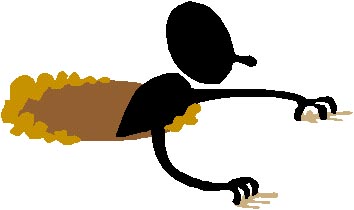
Quit telling me to have a nice day! I've had them and I don't like them!
Students exhibiting symptoms of depression should be referred to the school guidance counselor or social worker (perhaps via a referral to the school-based support team). As teachers, we can supply invaluable information to assist in the analysis of the condition and development of a treatment plan (if deemed necessary). We may also be asked to participate in the implementation of that plan which is designed to change the youngster's stinkin' thinkin' (...a "brain fart"?). Some ways in which educators are often involved in the identification or intervention process are:
-Completing checklists with a listing of possible depressive symptoms (such as the one provided above)
-Talking with the student to gather information, perhaps using structured interview techniques (see the links on this site titled "LSI/LSI", "Classroom counseling", and "Non-directive therapy")
-Observing the student and completing behavior rating scales or keeping data (see the links on this site titled "Behavioral recording")
-Administering rating scales to other students to determine their impressions of the student under scrutiny
-Administering a self report instrument to the youngster of concern
-Initiating and maintaining communication with the pupil's parents in order to obtain and provide new information (see the link on this site about working with parents)
-Maintaining communication with the school counselor or psychologist in order to exchange information
-Training the youngster in social skills. Because unrewarding social interaction with others can bring on or maintain depression, social skills training may be indicated. Such instruction assists students by providing opportunities to model and rehearse the interaction skills. (see the link on this site titled "Teaching social skills")
-Limiting attention to depressive episodes. Depressed children often become the object of counterproductive sympathy 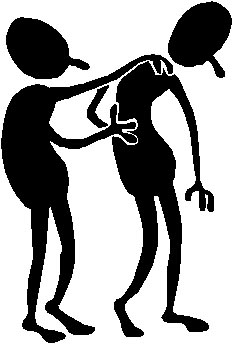 that reinforces their "down" behavior. It is important to avoid reinforcing depressive episodes through misdirected sympathy, assurance, and support. Reinforce positive behaviors instead. For example, you might direct the student to other topics if depressive thoughts are verbalized. Instead of focusing on the "droopy" behavior, an effort should be made to get the youngster to concentrate on solutions and set goals. You might focus on teaching the student how to gain attention and support in other ways. (see the links on this site titled "Differential reinforcement", "Self monitoring", "shaping",
and "What is ABA"...scroll down to the section on ignoring)
that reinforces their "down" behavior. It is important to avoid reinforcing depressive episodes through misdirected sympathy, assurance, and support. Reinforce positive behaviors instead. For example, you might direct the student to other topics if depressive thoughts are verbalized. Instead of focusing on the "droopy" behavior, an effort should be made to get the youngster to concentrate on solutions and set goals. You might focus on teaching the student how to gain attention and support in other ways. (see the links on this site titled "Differential reinforcement", "Self monitoring", "shaping",
and "What is ABA"...scroll down to the section on ignoring)
-Training the youngster in cognitive strategies for avoiding depressive thoughts and interpretations. Cognitive therapies assume that children who are capable of developing the negative thinking associated with depression are just as capable of thinking positive thoughts. This thought transition is accomplished through "cognitive change" strategies. Teachers might help students monitor their behavior (see the link on this site for "self monitoring", "behavioral recording", and "differential reinforcement") to help them notice the effects of their efforts on attaining goals. Teachers can also provide positive feedback on behavior and assignments, attributing the results to the efforts of the student. (See the link on this site titled "problems with catching em being good). The focus should then change to urging students to self-affirm how their efforts do make a difference. You might follow the student's negative self-statements with a request that s/he identify some positive performance on his/her part. Emphasis is placed on positive and prosocial behavior, not the depressive, negative behavior.
-Planning frequent and activity oriented pleasurable activities that prevent or disperse negative thoughts.
-Administering medication (with parental and administrative permission) or assuring that the medication was administered or taken.
-Providing success experiences. Perhaps the most important intervention strategy for childhood depression involves ensuring daily successful experiences in the child's life. These successful events provide evidence to combat negative self thoughts and incorrect identification of reasons for outcomes/results. Establish small attainable goals for the student and have him/her self monitor progress to notice change.
-Teaching the child to use affirmations. Affirmations involve saying positive things about oneself such as: "Man, this stuff is difficult. But I've learned difficult things before when I tried really hard." and "I'm a good person. I make mistakes, but they're unintentional. Most of the time I make good choices." The uttering of affirmations can help kids view themselves in a more positive light. Youngsters can learn to influence their own patterns of self-talk, which can help induce relaxation while reducing fear or anxiety.
I had a friend who bought a calendar with daily affirmations. It contained different statements to say each morning before leaving the house...Things like "Others are drawn to me." and "I am loved by many." (These things were true, but her multiple sex partners were part of her problem).
-Teaching coping and change skills. Children can be taught to be aware of depressive feelings and thoughts as they occur. Many kids can learn ways to avoid or escape this negative thinking pattern. Teachers and counselors can provide instruction in various behavior change skills to be used when these unhappy times occur. Youngsters can learn, over time, to increase their activity level by themselves without adult guidance or encouragement. They can change their negative thoughts and feelings to positive ones by redirecting their thoughts to pleasant experiences and by using deliberate internal affirmations of self worth. With the help of a teacher or counselor, a depressed child can create a menu of activities in which s/he can engage when feeling depressed.
-Promoting productive use of fantasy. Depressed kids can be taught to use their natural childhood ability to daydream and fantasize in a positive and productive way. A child can be taught when and how to use certain daydreams. This intentional use of "mind drift" can help the youngster to understand the distinction between fantasy and reality (if that distinction is not yet apparent).
| Click here for more symptoms of depression and strategies for reaching & teaching these youngsters |
| Click here for a video case study of a youngster with depression |
Song Lyrics to "My Favorite Things"
Raindrops on roses and whiskers on kittens
Bright copper kettles and warm woolen mittens
Brown paper packages tied up with strings
These are a few of my favorite things
Cream colored ponies and crisp apple streudels
Doorbells and sleigh bells and schnitzel with noodles
Wild geese that fly with the moon on their wings
These are a few of my favorite things.
Girls in white dresses with blue satin sashes
Snowflakes that stay on my nose and eyelashes
Silver white winters that melt into springs
These are a few of my favorite things
When the dog bites
When the bee stings
When I'm feeling sad
I simply remember my favorite things
And then I don't feel so bad
________________________________________________________________________________________________________________________
Did You Know...
Children with low levels of vitamin D are more likely to suffer from depression than those with adequate levels. In fact, they have a 10% greater risk of developing this mental health disability. That’s the conclusion of a massive study of children ages 9-13.
Those with the highest levels of the ‘sunshine vitamin’ have a 10 per cent lower risk of developing the mental health problem. Additionally, children with higher levels of “D” were more likely to show a decline in any depressive symptoms when they reached their teenage years. The University of Bristol study investigated levels of two forms of the vitamin; D2 and D3, finding D3 to have the strongest anti-depression link.
For a money-saving source for additive-free vitamin D (& all of your other healthcare needs), visit the place where I get my vitamins and just about everything else (and help support a pre-teen kid’s swim team): www.shop.com/spartans
___________________________
What Is Manic Depression?
Manic Depression, also referred to as "bipolar illness", is a form of depression. The person's moods and activity levels alternate between extremes. Classic depression with it's despair and lethargy is present for a period of time. That phase then transforms into the manic phase.
For that time, the person may experience feelings of elation and ecstasy combined with high activity levels and a lack of desire to sleep. The manic period, which can last up to four months if untreated, includes an exaggerated sense of well being and importance that may lead to fantasies which the individual believes to be real. Depression is still present at both stages, but the thoughts and actions of the individual change radically. In the manic phase, individuals have feelings of depression while being overly active mentally and physically. Bipolar illness is believed to be a result of fluctuating biochemistry in the brain. The incidence of manic depression is 10 to 20 times greater for children in families with a history of the illness than in the general population.
Manic Depression is frequently treated with Lithium, a medication taken orally. It has a 70% success rate in making mood swings less frequent, shorter in duration, and less severe in intensity. Other medications are sometimes prescribed.
"He's turned his life around. He used to be depressed and miserable. Now he's miserable and depressed." David Frost
If you don't like the crease in your pants after they've been ironed, can they be depressed?
______________________________________________________________________________________________________________________
RESOURCES
.
.
.
.
 Hmm...wasn't "high level of activity" a symptom of depression?
Hmm...wasn't "high level of activity" a symptom of depression?
Author: Tom McIntyre at DoctorMac@BehaviorAdvisor.com
I'd like to thank Shoshana Motechin for her contributions to this page. THANKS SHOSHANA!

 , or conversely...highly active
, or conversely...highly active


 that reinforces their "down" behavior. It is important to avoid reinforcing depressive episodes through misdirected sympathy, assurance, and support. Reinforce positive behaviors instead. For example, you might direct the student to other topics if depressive thoughts are verbalized. Instead of focusing on the "droopy" behavior, an effort should be made to get the youngster to concentrate on solutions and set goals. You might focus on teaching the student how to gain attention and support in other ways. (see the links on this site titled "Differential reinforcement", "Self monitoring", "shaping",
and "What is ABA"...scroll down to the section on ignoring)
that reinforces their "down" behavior. It is important to avoid reinforcing depressive episodes through misdirected sympathy, assurance, and support. Reinforce positive behaviors instead. For example, you might direct the student to other topics if depressive thoughts are verbalized. Instead of focusing on the "droopy" behavior, an effort should be made to get the youngster to concentrate on solutions and set goals. You might focus on teaching the student how to gain attention and support in other ways. (see the links on this site titled "Differential reinforcement", "Self monitoring", "shaping",
and "What is ABA"...scroll down to the section on ignoring)